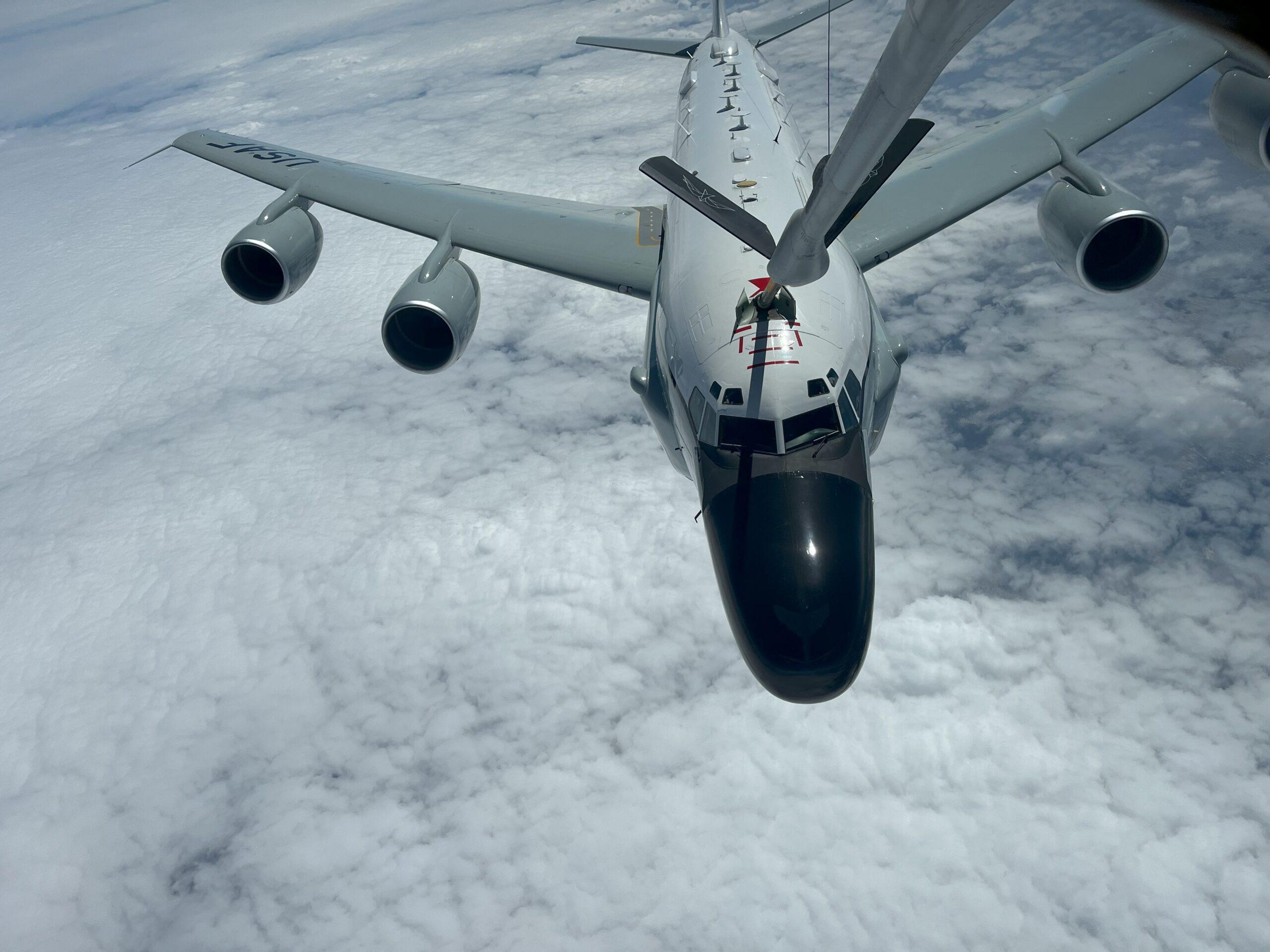
A Metrea-owned KC-135R tanker refuels a U.S. Air Force RC-135 Rivet Joint aircraft for the first time.
Credit: Metrea Strategic Mobility
A privately owned Boeing KC-135R refueled two U.S. Air Force aircraft in late June, marking the service’s first air-to-air refueling from a commercial service provider. The Metrea Strategic Mobility-owned tanker, which was acquired from the Republic of Singapore Air Force, offloaded nearly 90,000 lb...
Subscription Required
This content requires a subscription to one of the Aviation Week Intelligence Network (AWIN) bundles.
Schedule a demo today to find out how you can access this content and similar content related to your area of the global aviation industry.
Already an AWIN subscriber? Login
Did you know? Aviation Week has won top honors multiple times in the Jesse H. Neal National Business Journalism Awards, the business-to-business media equivalent of the Pulitzer Prizes.





